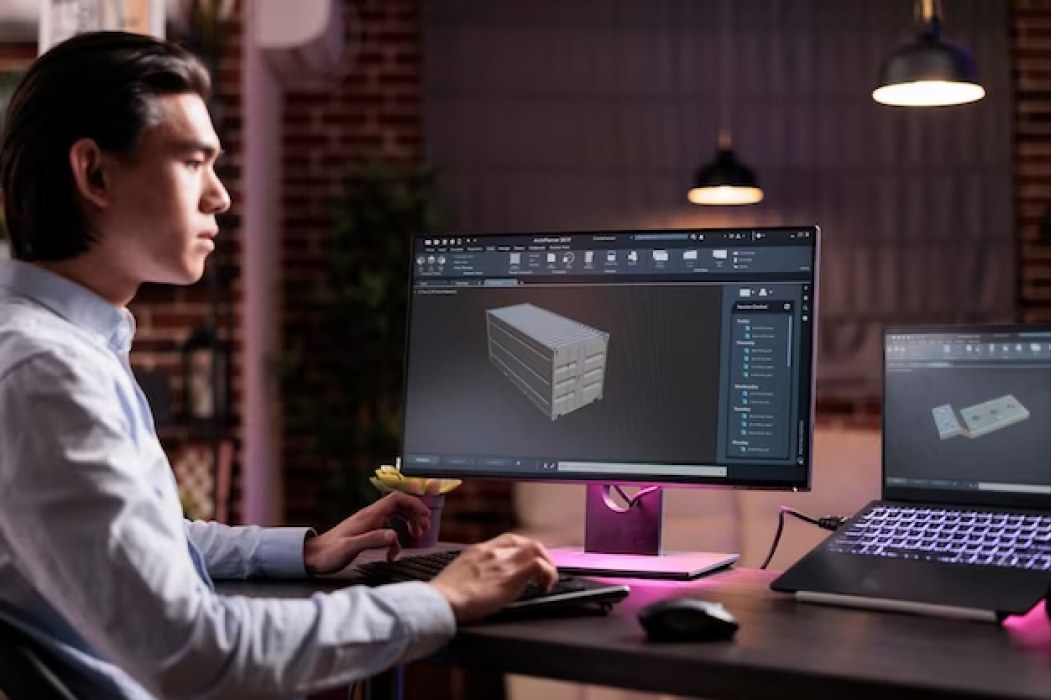The gap between an idea and a tangible reality is often huge. Data says that for every 7 product ideas, only 1 materializes. Of all the product development methods out there, field-driven design has proved to be the best at continuously upscaling ideas and giving them life.
Field-driven design offers new and more detailed than ever ways of designing every element of a product. For example, it lets you customize everything from diameter to location of individual holes to perforation patterns in a framework. That and even finer details of a product.
In many ways, field-driven design is the future of product designing and manufacturing. With its unique customizability and scalability, it is the most superior method available today.
nTopology has revolutionized the way we approach field-driven design for product development. Within a few years, it has become an indispensable tool in any designer’s arsenal.
Top reasons why field-driven design is highly beneficial for product development.
Understanding field-driven design is crucial for adding a touch of modern tech to your product development lifecycle. With attention to the tiniest detail and scalability at every level, it is the most comprehensive solution for product development.
Let’s explore the five reasons why field-driven design is highly beneficial for product development.
1) Fields are a unifying language
The magic of fields is in its all-encompassing nature. Fields are present everywhere, and all engineering data can be converted to fields. Be it data from computer-aided design (CAD), or other computer-aided product development processes. In other words, all physical objects, graphs, images, designs, can be interpreted from the lens of fields.
Field-driven designing allows you to modify any given point in space however you want. It can be in directions, sizes, complexities, and more. Such manipulations of random points in space are not possible outside field designing. I
For example, in CAD, manipulation capabilities are more restricted. With field-driven designs, the ability to customize and scale any and every point is optimized to an unforeseen level.
With the growth in manufacturing power and capabilities, the engineering landscape has become increasingly complex. If not impossible, it is extremely difficult to maintain uniformity across ecosystems and product facilities.
On the other hand, field-driven designs allow you to maintain compatibility across ecosystems and make life easier for designers. In many ways, field-driven design makes it possible for systems to interpret data that was otherwise incompatible. Users can also manually describe operating systems to modify designs and dimensions.
A single standard for product development increases efficiency and fast tracks the process. It also gives you more time to analyze the market response, performance, customizability, etc., and modify it within your existing ecosystem. It’s a revolutionary technology in the field of product design.
2) Make the most of lattice structures with field-driven design
Field-drive design enables product designers to make the most of lattice structures. Swapping an older structure like fins for a lattice structure can be extremely beneficial to product efficiency and performance.
For small structures especially, lattice designs work better than traditional frameworks. They offer better customizability with heat transfer and are more print-friendly than their alternatives. nTopology offers advanced scaling capabilities that let designers customize every element for these lattice frameworks.
The advantages of lattice structures become more prominent when we look at products that actually made the switch. It gives designers a chance to be much more creative with their 3D designs.
With thousands of lattice structures generated mathematically, it saves a lot of time and resources that can be put to better use. Lattice structures offer many benefits over their counterparts. Working with lattice structures is a seamless process in field-driven design using nTopology’s cutting-edge tools.
Lattice frameworks are always more cost-efficient than alternatives. Wastage levels are also lower. On average, 50% less material is wasted in lattice designs. They are also more lightweight, customizable, and come with fewer post-manufacturing complications.
Lattice structures are one of the many ways you can use field-driven design to make your product more suited to the market. With its customizing capability, you can also keep up with changing demands and needs. Lattice designs have found acceptance in many different sectors. Field-driven design makes it possible for all product developers to gain from this innovative technology.
3) Fields are a shared language for the product development team
Product developers, like all humans, do not speak the same language. When we say the same language we do not mean everyday language for communication.
What differs more greatly among all members of a product development team is the way they convey information about the product.
For example, a front-line manufacturer does not speak the language of the engineer. Similarly, a design expert does not speak the language of product marketers. It is a challenging task to bring all these skilled personnel to the same place and make them understand each other. The solution to this conundrum lies in field-driven design.
No matter how differently different sectors of a product marketing team speak, they all understand the concept of space.
Spaces are a part of our living reality, and field-driven design optimizes the concept of space to convey information about product design and development. It brings these different people to a common ground where they can discuss the merits and shortcomings of the product and how to make it even better. Without shared understanding, it will be very difficult for product development teams to work together.
Since CAD is still the preferred mode of input geometry, it can be difficult to share information and ideas without enhancing shapes and internal forces without topology optimization. Results are measured in prototypes, which makes layering of information possible. These factors work together to make field-driven design a shared language for product development teams.
4) Fields speak in physics and geometry
Traditional boundary representation, or BRep, is used in CAD systems. The problem with BRep is that they do not speak the language of fields. However, once converted to implicit distance field representation, it offers scalability and automated modeling.
Fields are widely used in engineering simulations. The role of physics here is very important since different solvers take different boundary condition inputs and provide different fields as output.
The amalgamation of geometry and physics in field-driven design sets it apart from other systems. With attention to geometric shapes and geometry-based design, it ensures that the product development and manufacturing process takes into account mathematical complexities that can come up as a result of errors.
Field-driven design gives you complete control of the product development process. By integrating physics with geometry in product design, it offers full control to the very end of product development.
The ability to overlay fields to create complex part geometry is an exclusive offering of field-driven design. It makes the product development lifecycle controllable and scalable to different levels and degrees.
As a consequence, it will lead to better market performance with the ability to deal with sudden changes and unexpected demands.
Geometry is the very basis of all design, and physics underlies all physical existence. Not addressing both in the product development process is a mistake that many teams and companies make. With field-driven designs, that problem is taken care of.
5) Field-drive design enables automation
Automation is at the heart of modern product development lifecycles.
Every sector is now increasingly using automation, but traditional computer-based designs make it impossible to use them in product design. However, the field-driven design approach brings components of automation to product development.
As a result, processes are much faster and errors much fewer. It also allows for advanced scalability using automated processes.
In traditional CAD, CAM, or CAE, each component of the product is viewed separately.
Naturally, it works against the very essence of automation. If the units do not share a workflow that can seamlessly transition between each other, automation becomes impossible at the fundamental structures.
Iteration loops are a major obstacle to product development automation. If every unit of the manufacturing and product designing process has to re-enter their inputs at every stage, it makes the overall process much slower. It is similar to manually entering and re-entering data in a spreadsheet instead of automating data entry and calculations.
Field-drive product development works with three types of data primarily. These are geometric input, engineering input, and manufacturing input.
If the operations of all three units are not in tandem (as it is in computer-aided design techniques), automation cannot work. With nTopology’s advanced tools, you can automate these three inputs and let the system do the calculations and modifications.
With the introduction of automation in product development through field-driven design, companies will have an easier time customizing old product ideas and coming up with new ones. Automation completely changes the way product developers work with unmatched efficiency, speed, and accuracy.
Conclusion
Field-driven design is a new approach to product development that takes into account each point of 3D space.
Seeing the product development process from the lens of fields changes the way we understand design inputs and envision new ideas.
With the introduction of groundbreaking tools, field-driven design is changing the landscape of product development.














Leave a Reply